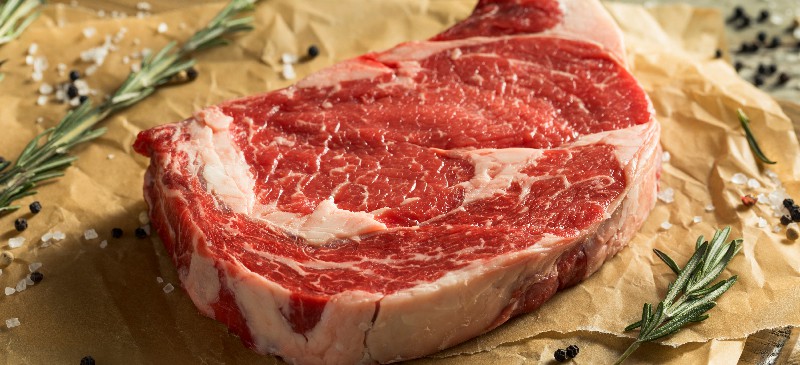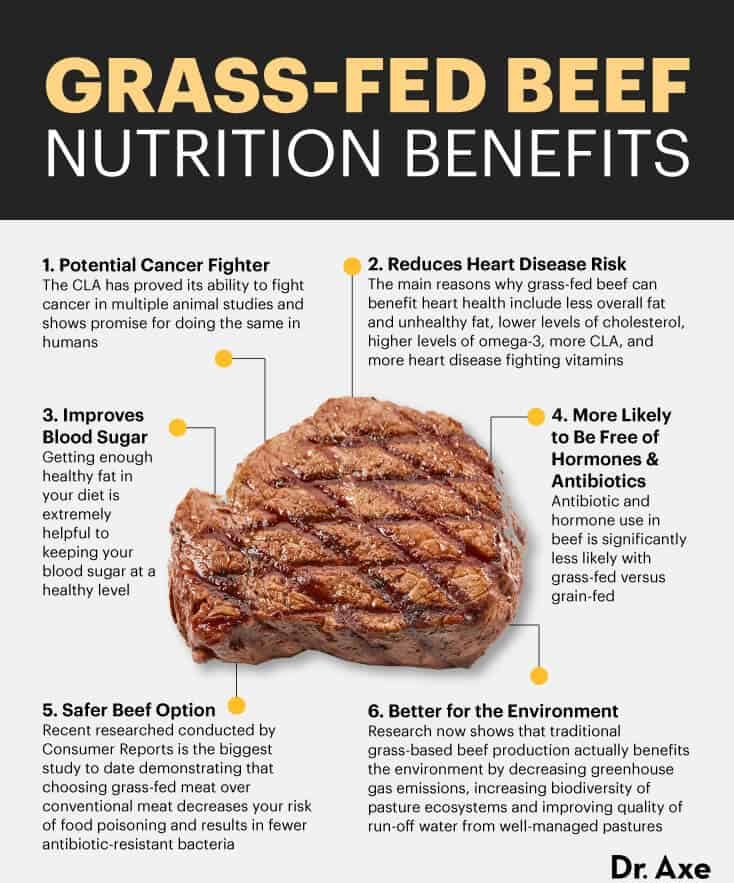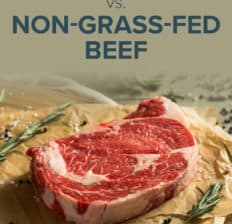This Dr. Axe content is medically reviewed or fact checked to ensure factually accurate information.
With strict editorial sourcing guidelines, we only link to academic research institutions, reputable media sites and, when research is available, medically peer-reviewed studies. Note that the numbers in parentheses (1, 2, etc.) are clickable links to these studies.
The information in our articles is NOT intended to replace a one-on-one relationship with a qualified health care professional and is not intended as medical advice.
This article is based on scientific evidence, written by experts and fact checked by our trained editorial staff. Note that the numbers in parentheses (1, 2, etc.) are clickable links to medically peer-reviewed studies.
Our team includes licensed nutritionists and dietitians, certified health education specialists, as well as certified strength and conditioning specialists, personal trainers and corrective exercise specialists. Our team aims to be not only thorough with its research, but also objective and unbiased.
The information in our articles is NOT intended to replace a one-on-one relationship with a qualified health care professional and is not intended as medical advice.
6 Grass-Fed Beef Nutrition Benefits that May Surprise You
May 7, 2023

Maybe up until now you haven’t thought too much about what the animals you eat today were fed yesterday. That’s pretty common for most folks, but there really is a difference between grass-fed beef and the rest.
You may have heard the terms “grass-fed” or “open range” and “grain-fed,” not knowing the real difference between them.
Once you understand the vital differences between grass-fed beef and grain-fed beef, you’ll have a better understanding of why this distinction is so important.
Today, most of the beef you find on the grocery store shelves has been fed a grain diet. In general, these cows are fed corn and soy, but often there’s more on their menu than strictly grains.
The reality is that cattle are fed whatever is the cheapest source of energy and will fatten them up the most.
Let’s look at exactly how grass-fed beef nutrition can really benefit your health and why it’s an overall better choice for yourself, your loved ones and the environment.
What Is Grass-Fed Beef?
Grass-fed beef is a red meat that’s considered one of the best protein foods around. In October of 2007, the U.S. Department of Agriculture (USDA) established a standard definition for the “grass-fed” claim that requires continuous access to pasture and prevents animals from being fed grain or grain-based products.
Cows are meant to spend their lives peacefully grazing on grass in wide-open pastures, but most cows today are raised in a confined animal feeding operation or concentrated animal feeding operation known as a CAFO.
In these massive facilities, not only are the cows confined and overcrowded, but they also don’t eat what’s best for them. Rather, they eat what makes them the fattest and hence yields the most money.
When these cows get sick (which easily happens with the far from ideal living conditions), they’re typically pumped full of hormones and antibiotics.
It’s said that a grain-fed, feed-lot cow can grow to be big enough for slaughter up to a year faster than a cow that’s fed only grass, foraged foods and hay. For grass-fed beef producers, it’s not just time they battle, but there are also higher operating costs, a shortage of processors and consumer hesitance to make the switch to grass-fed because of concerns about differences in taste and texture.
But the benefits of grass-fed beef are well worth making the extra effort, especially when you break down its nutritional value. Grass-fed burgers and steaks include significantly more omega-3 fatty acids and more conjugated linoleic acid(CLA) than grain-fed beef.
Grass-fed beef is also higher in precursors for vitamin A and E and cancer-fighting antioxidants compared to grain-fed beef.
If you haven’t heard of CLA yet, it’s a powerful polyunsaturated fatty acid we must obtain from our diets (such as a Paleo or ketogenic diet) that’s been shown to help fight cancer, discourage weight gain and build muscle, and high-quality grass-fed beef and butter from healthy, grass-fed cows or other animals — like bison — are the top sources of CLA. Grass-fed beef is actually a rare high-cholesterol food to include versus avoid.
Health Benefits
1. Potential Cancer Fighter
There are actually 16 different types of CLA, each providing a unique and highly important health benefit. CLA has been shown in numerous animal studies since 1994 to promote health and fight disease.
From cancer fighting to weight loss, CLA is touted worldwide as a “must have” in your diet for optimal health today and into tomorrow. Studies on conjugated linoleic acids show their ability to prevent and treat cancer as well as obesity, diabetes and cardiovascular diseases.
CLA sources have proved their ability as cancer-fighting foods in multiple animal studies. As a study published in the journal Cancer suggests, CLA is unique in the fact that it comes from animal sources since the majority of natural, anticancer substances are of plant origin. Additionally, animal-derived CLA’s “anticancer efficacy is expressed at concentrations close to human consumption levels.”
In 2000, a Finnish study published in the journal Nutrition and Cancer demonstrated that there may also be anticarcinogenic effects of CLA for humans. In this study, women who had the highest levels of CLA in their diets had a lower risk of breast cancer than those with the lowest levels of CLA.
The anticancer research for CLA and humans will hopefully continue because it looks very promising so far.
2. Helps Reduce Heart Disease Risk
Research indicates that an herbivore diet for livestock is linked to human health and can protect meat from protein oxidation and lipid peroxidation that’s linked to inflammation and heart disease. This is in large part due to the phytochemicals that are present in a grass-fed diet.
The main reasons why grass-fed beef can benefit heart health include:
- Less overall fat and unhealthy fat
- Lower levels of dietary cholesterol
- Higher levels of heart-healthy omega-3 fatty acids
- More CLA
- More heart disease-fighting antioxidant vitamins, like vitamin E
When you take into account this impressive nutrition content, you can easily understand why eating grass-fed beef burgers and sirloins instead of conventional options can help reduce the risk of cardiovascular disease.
3. Can Improve Blood Sugar
Getting enough healthy fats in your diet is extremely helpful to keep your blood sugar at a healthy level. Research published in the Journal of Endocrinology and Metabolism in 2016 looked at the effects of the healthy fat CLA on insulin sensitivity in obese children.
The randomized, double-blinded and placebo-controlled study found that 37 percent of the patients treated with CLA exhibited improvements in insulin sensitivity. In addition, muscle biopsies of the subjects treated with CLA showed an upregulation of the protein molecule IRS2 that mediates the effects of insulin on the body.
Clearly, the benefits of grass-fed beef nutrition are not just for adults. These results in children are also meaningful for adults looking to keep their blood sugar under control to ward off diabetes, heart disease and metabolic syndrome.

4. More Likely to Be Free of Hormones and Antibiotics
Reports show that about 80 percent of antibiotics sold in the United States go to livestock like cows, so it’s not crazy to be worried about antibiotics in beef. Cows that aren’t grass-fed live on diets of grain and are typically given hormones to unnaturally increase their weight and hence yield more meat.
With grass-fed cows, weight gain is not as high because they eat a healthier, lower-calorie diet.
The main reason farmers use more antibiotics is that as meat demand goes up, animals are confined to smaller and smaller spaces, and this greatly increases the spread of disease. The use of antibiotics in meat, particularly factory-farmed meats, contributes to antibiotic resistance in human, which is why it’s so important that you not only question what goes in your body, but what goes in the body of the animals you put on your dinner plate.
Feeding cattle grain makes their intestinal tracts much more acidic, and this promotes the growth of bacteria like E. coli, which can actually kill someone who eats undercooked beef like a rare hamburger. We can thank the commercial meat industry for this kind of scary beef, which is the product of feeding cows grain and keeping them in overcrowded, disease-ridden feed lots.
Antibiotic and hormone use in beef is significantly less likely with grass-fed versus grain-fed. If meat is organic and grass-fed, then the animal was not given antibiotics or hormones because organic cattle are fed organic feed and are not given antibiotics or hormones.
For grass-fed cattle, antibiotics are typically not given, which is very different form the consistent and common use of antibiotics on feed-lot, grain-fed cows.
5. The Safer Beef Option
Research conducted in 2015 by Consumer Reports is the biggest study to date demonstrating that choosing grass-fed meat over conventional meat decreases your risk of food poisoning and results in fewer antibiotic-resistant bacteria. The researchers tested for the presence and variety of bacteria in 300 samples of ground beef from 103 grocery, big-box and natural food stores in 26 cities across the country.
Consumer Reports notes that:
One of the most significant findings of our research is that beef from conventionally raised cows was more likely to have bacteria overall, as well as bacteria that are resistant to antibiotics, than beef from sustainably raised cows. We found a type of antibiotic-resistant S. aureus bacteria called MRSA (methicillin-resistant staphylococcus aureus), which kills about 11,000 people in the U.S. every year, on three conventional samples (and none on sustainable samples). And 18 percent of conventional beef samples were contaminated with superbugs — the dangerous bacteria that are resistant to three or more classes of antibiotics — compared with just 9 percent of beef from samples that were sustainably produced. We know that sustainable methods are better for the environment and more humane to animals. But our tests also show that these methods can produce ground beef that poses fewer public health risks.
6. Better for the Environment
Grass-fed beef nutrition leads to many benefits to your personal health, but there’s more. Not only is grass-fed beef better for your health than grain-fed, but it’s also better for the environment.
Many people avoid beef and meat entirely because of environmental concerns.
When it comes to grass-fed beef, there is some very good news. Research now shows that traditional grass-based beef production and finishing actually benefit the environment by decreasing greenhouse gas emissions, increasing biodiversity of pasture ecosystems and improving quality of run-off water from well-managed pastures.
Overall, grass-fed beef has actually been shown to reduce the carbon footprint and help the environment rather than hurt it.
Grass-Fed Beef Nutrition Facts
Are you wondering: What do cows eat? If left to its own devices, a cow will eat and thrive on a diet that’s very grass-centric, with a few other foraged plants like clover thrown in.
A cow has a digestive system quite different from a human’s, one that’s truly meant to flourish eating that common green flooring we all know as grass.
Grass-fed beef comes from cattle that consume only grass and other foraged foods during the course of their lives. What a cow eats directly affects the types and levels of nutrients and fats you get from eating meat from that cow.
Meat from 100 percent grass-fed cows is loaded with even more nutrition than what you get from a grain-fed cow. All that grazing of grass and roughage rather than being on a diet of processed foods really goes a long way.
For example, one lean grass-fed strip steak (approximately 214 grams) contains about:
- 250 calories
- 49.4 grams protein
- 5.8 grams fat
- 14.3 milligrams niacin (72 percent DV)
- 1.4 milligrams vitamin B6 (70 percent DV)
- 45.1 micrograms selenium (64 percent DV)
- 7.7 milligrams zinc (52 percent DV)
- 454 milligrams phosphorus (45 percent DV)
- 2.7 micrograms vitamin B12 (45 percent DV)
- 4 milligrams iron (22 percent DV)
- 732 milligrams potassium (21 percent DV)
- 1.5 milligrams pantothenic acid (15 percent DV)
- 49.2 milligrams magnesium (12 percent DV)
- 0.1 milligram thiamin (7 percent DV)
- 27.8 micrograms folate (7 percent DV)
- 0.1 milligram copper (7 percent DV)
Grass-Fed vs. Grain-Fed Beef
The major difference between grass-fed beef and grain-fed beef is the diet of the cows. One set eats mostly grass, while the other eats mostly grain or an unnatural diet that’s based on corn and soy.
Livestock diet can greatly impact the nutrient composition. This means that consuming grass-fed beef provides more nutrients, especially healthy fats, than eating grain-fed beef.
Research published in the British Journal of Nutrition indicates that compared to concentrate-fed animals, grass-fed animals provide greater concentrations of omega-3 fatty acids. Grass-fed beef can contain up to five times more omega-3s than grain-fed beef.
Grass-fed burgers and steaks also contain twice as much CLA than conventionally raised beef.
In addition, according to the NC Cooperative Extension from NC State University and N.C. A&T State University, “Due to their diet, grain-fed beef tends to have whiter colored fat and typically has more marbling. The marbling is responsible for a lot of the flavor and tenderness of beef and is used when grading quality. Grass-fed beef typically has a more yellow-colored fat and is leaner with less overall marbling and fat.”
The bottom line is grass-fed beef has a better fatty acid composition and nutritional profile than non-grass-fed beef, as research finds pretty consistently. For example, it’s higher in:
- Omega-3s
- Glutathione
- CLA
- Vitamins A, D, E, K, B1 and B2
- Minerals like calcium, magnesium, zinc and iron
How to Add to Diet
Grass-fed beef does typically cost more per pound, but it’s certainly worth the slightly higher price tag. Most grocery stores now offer an organic section that carries at least one, if not a few, grass-fed beef options.
You don’t want to settle for “natural” or “pasture-raised.” Ideally you want the label to tell you that the beef is 100 percent grass-fed, which means that it was both grass-fed AND grass-finished.
If a beef product does not indicate that it’s 100 percent grass-fed or both grass-fed and grass-finished, then it could likely be grain-finished. Make sure the label also indicates that the beef is free of hormones and antibiotics.
It’s another plus if you see a label from the American Grassfed Association (AGA) or American Food Alliance (AFA) on the packaging. The AGA and AFA are organizations that have stricter requirements than the USDA when it comes to grass-fed labeling.
Choosing products that are grass-fed AND organic is even better. It’s important to note that grass-fed does not equal organic, and organic does not equal grass-fed.
It’s possible that grass-fed cows roaming the pasture consume synthetic fertilizers and herbicides used on the grass, so if you really want to get the most natural, cleanest beef possible, buying organic, grass-fed is definitely the way to go. Also note that there are some farmers who raise their cows organically and grass-fed but just can’t afford the organic certification. That’s why it’s important to research or really know the source of your meat.
One of the best options for eating grass-fed beef is to locate a local farmer in your area who raises cattle on open, free ranges, feeds them only fresh and dried grasses, and doesn’t use any type of pharmaceuticals, such as hormones or antibodies. When you shop locally for your foods, from beef to apples, you’ll be healthier and happier. You’ll also contribute to your local community in ways that only buying locally can.
Are you ready to start cooking and take in all of that grass-fed beef nutrition and health benefits? Try these grass-fed beef recipes that are both healthy and delicious:
Grass-fed beef does have a different taste than grain-fed. Some people describe it as a more earthy or grassy flavor, and many people prefer the taste to grain-fed beef.
It’s also important to know that since grass-fed beef is inherently less fatty, it cooks around 30 percent faster than grain-fed beef.
Risks and Side Effects
With grass-fed beef, you can obtain all that awesome grass-fed beef nutrition with a lower likelihood of dangerous diseases. However, it’s important that you handle and cook your beef appropriately to avoid any food-borne illness.
To be on the safe side, the USDA recommends cooking hamburgers and ground beef mixtures (like meatloaf) to a food thermometer reading of 160 degrees Fahrenheit (71.1 degrees C). For steaks and roasts, the USDA recommends a minimum internal temperature of 145 degrees F (62.8 degrees C) before you remove the meat from the heat source.
For the sake of safety as well as quality, you should then let the beef rest for a minimum of three minutes before eating it.
Final Thoughts
- When you eat grass-fed beef, not only are you doing something good for yourself, but you’re also eating with a conscious and promoting the proper treatment of cows. If you’ve been eating grain-fed beef for most of your life, you may feel confused right now, unsure of how to make a change to eating grass-fed beef.
- Choosing to benefit from grass-fed beef nutrition is a powerful step toward living a healthy, abundant life, as grass-fed beef nutrition has been shown to potentially fight cancer, reduce heart disease risk, improve blood sugar levels and even benefit the environment, all while being a safer beef option that’s free of hormones and antibiotics.



